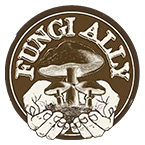Today we are looking at some wild mushroom identification pictures & videos of the reishi and the artist conk, both found in the Northeast, United States
There are so many wild mushrooms that intrigue the senses. Today we are looking at some wild mushroom identification pictures and videos. The first video goes over wild medicinal mushrooms and covers six different ones. The following two videos each cover a specific mushroom. The first video goes over reishi, and the second video covers the artist conk.
Without any further adieu, let’s get into the reishi and the artist conk mushrooms.
Wild mushroom identification pictures & video: Reishi (Ganoderma tsugae)
We're out here in the beginning of June in the northeast in Massachusetts, and just came upon some Ganoderma tsugae. Reishi is an amazing medicinal mushroom that grows in many place around the world. Ganoderma is Latin for “shiny skin”, so when you see this mushroom, you can notice that it has this shiny appeal to it. Then “tsugae” is based on the hemlock tree (tsuga canadensis), and that's what it grows on.
The reishi that we've had the most medicinal studies from China is Ganoderma lucidum, so it's technically a different species but in the same genus so it's not clear if there's a huge difference in the medicinal properties. Many of the compounds are going to be similar.
Background info on reishi
This mushroom has a history of usage for thousands of years in Japan and in China, and is becoming more and more popular here in the US. It's mainly prepared into a tincture or a tea, as many of the compounds are hot water soluble.
The reishi in the video are a little bit early to cut. As you can, reishi starts in a white button phase, and this part is actually edible. With this mushroom in the video, you could cut the top off and the mushroom would continue to grow.
Reishi will eventually turn a shiny red color, so the white and the yellow will fade into red, and that's when they're ready to harvest and make into tea. Or they can be dried and preserved that way.
To access the medicinal benefits of this mushroom you need to break down the chitin. You can do that either by extracting it in hot water or alcohol. The primary constituents that we're looking for with reishi are beta glucans, sterols and triterpenes. The beta glucans are water soluble, so just making a tea out of this mushroom will allow those to be taken into your body.
Reishi has a lot of beta glucans and in a lot of supplemental products, you'll see most mushrooms have beta glucan content around 20% - 25%. Reishi has close to 50%. So this is a great one for supporting the immune system.
There’s also a significant amount of triterpenes. There's hundreds of types of triterpenes that have been identified by science. The primary one in reishi is ganoderic acid, which is exclusive to the reishi mushroom. These acids can only be taken into our body after an alcohol extraction, so you'd want to make a tincture to be able to access the full spectrum of traditional benefits.
A couple of the primary uses of reishi include immunomodulation, so it's a great support for helping to increase the amount of natural killer cells in your body. As an immunomodulator, it can help to strengthen your immune system if it's deficient, or it can help tone it down if it’s acting excessively.
The other benefit triterpenes offer is supporting a healthy sleep cycle. Some triterpenes, like tryptophan in turkey is a common example, can make you a little drowsy. Those compounds in reishi help to create a healthy sleep cycle for deep rest. And that's also part of why it's looked at as an anti-stress and anti-aging medicinal mushroom.
Watch the video to see how and when to harvest this mushroom.
Wild mushroom identification pictures & video: Artist conk
The mushrooms in this video are the artist conk (Ganoderma applanatum). They're in the same genus as reishi and they are around year-round, so they’re a perennial mushroom that keeps growing. You can see the white growth margin in the video.
The coolest thing about the artist conk is that you can draw on the bottom, so when you come over and look underneath you may see different messages.
You find this mushroom on dead trees, and this one has an awesome spot for dispersing spores because the spores are going to drop off into the water, and then those spores will be carried off by the moving water. It wouldn't be surprising if this mushroom got here through being in the water in the first place.
Keep your eye out for this mushroom. The top is slightly striated and it has multiple colors. It's a very woody, hard mushroom. If you're trying to harvest it, you just pull the mushroom off and that'd be totally fine. They do grow year after year, so you can come back and check on them. Always leave one or two so they can keep growing and getting bigger. You can make this into a tea, as it has some of the similar beta glucans and triterpenes that reishi has. It is good for the immune system to make tea or tincture out of it.
Let us know if you find any on your own. You can send any photos you take or pictures you make on the underneath of the artist conk.
What wind of wild mushroom identification pictures of videos would you like to see?


